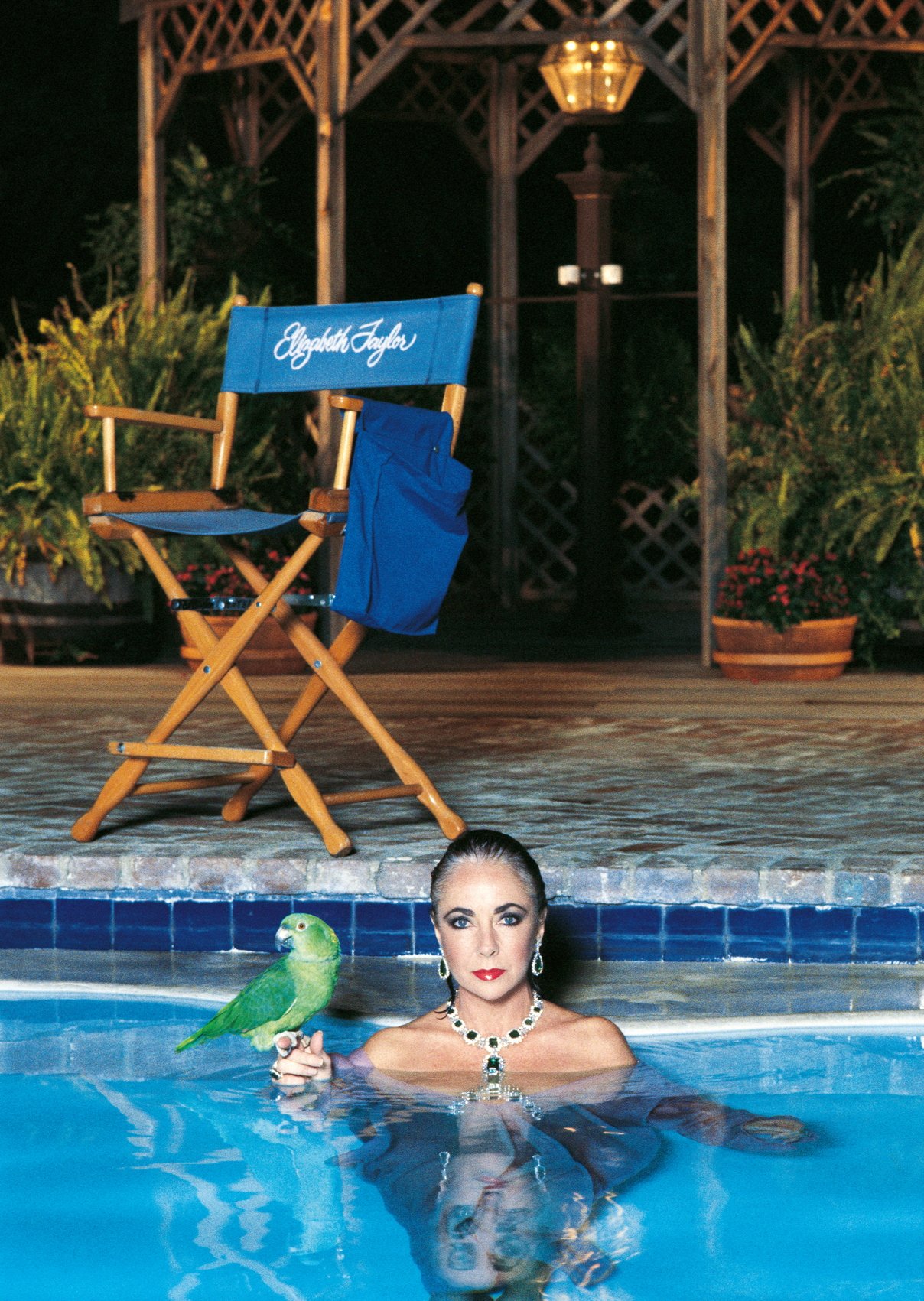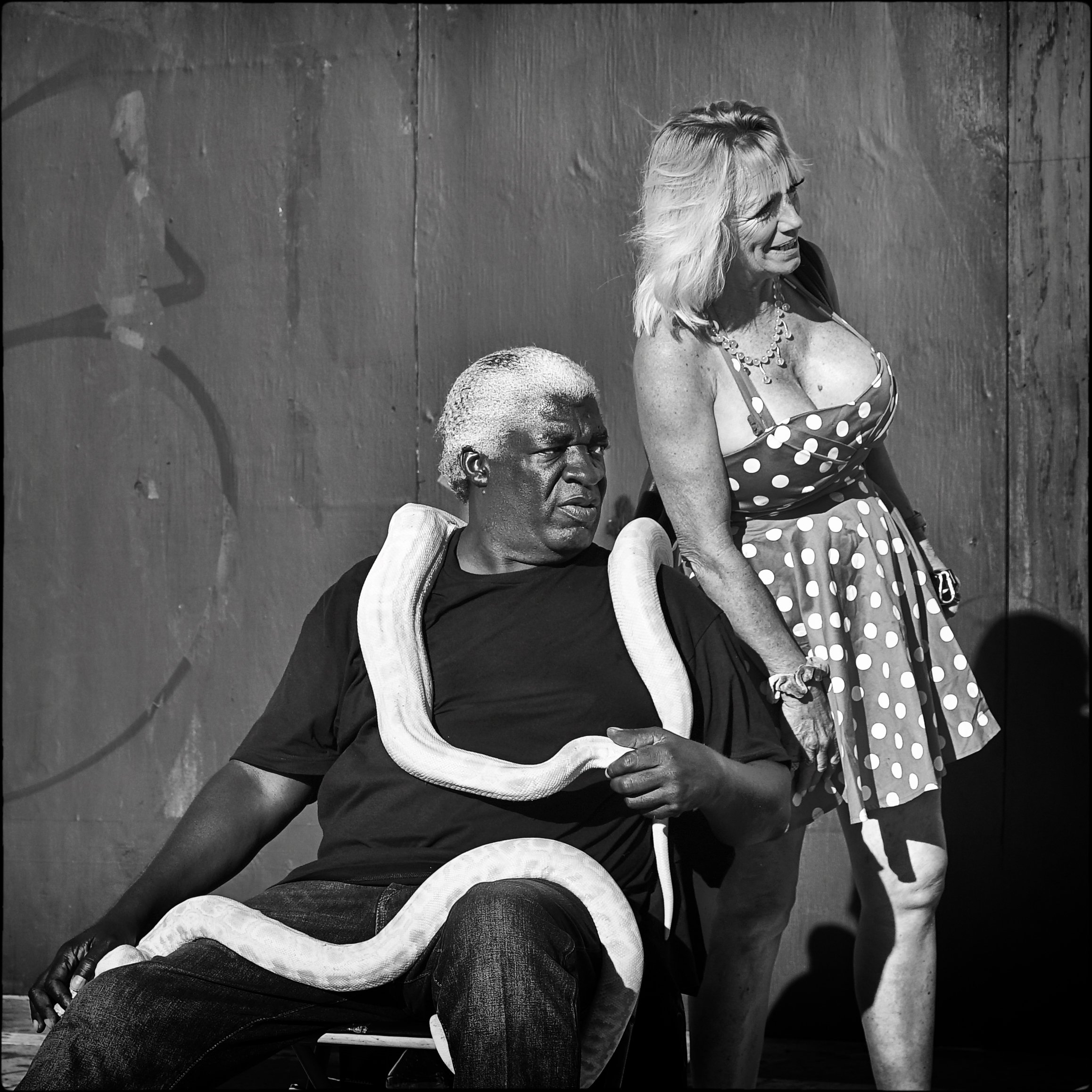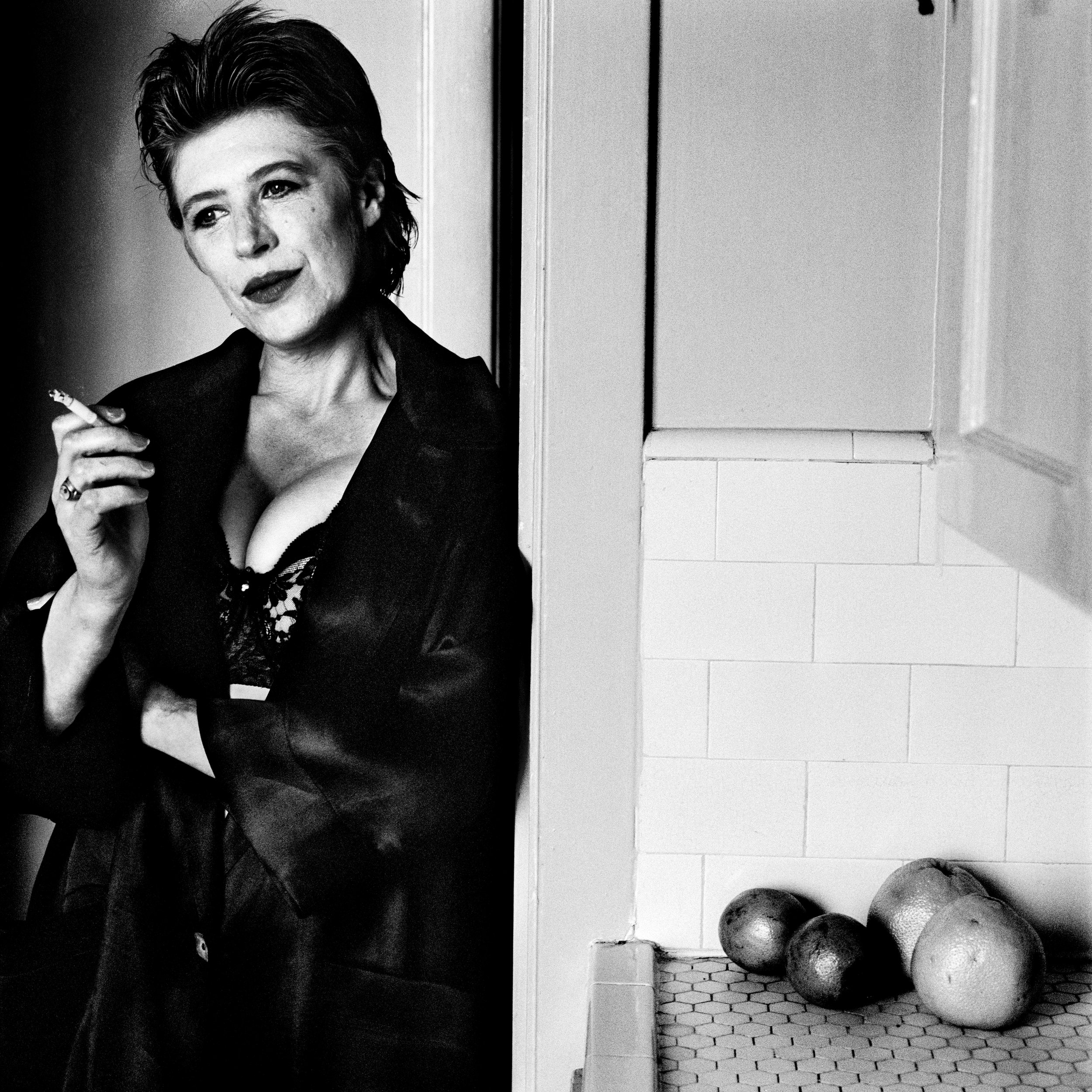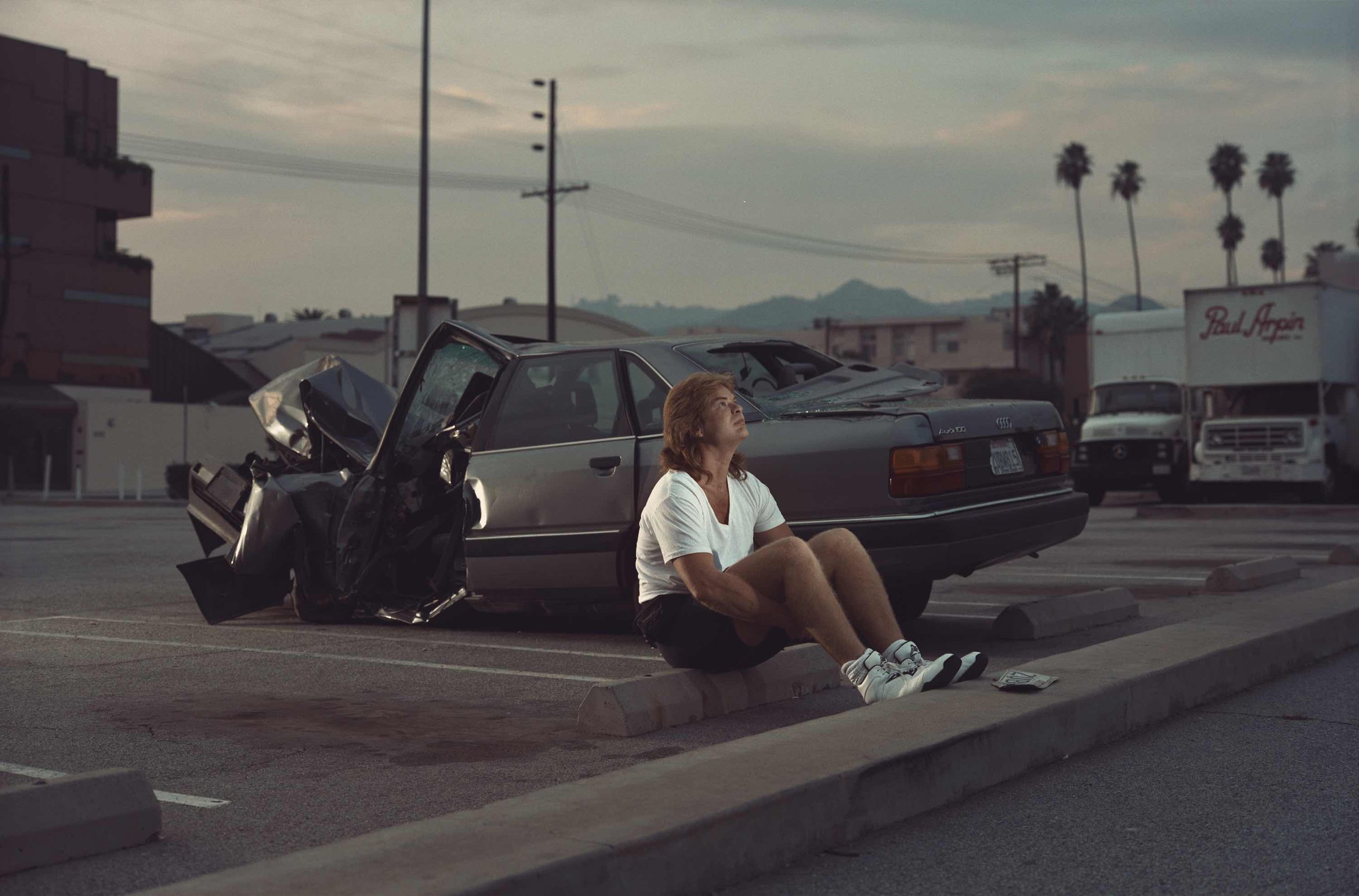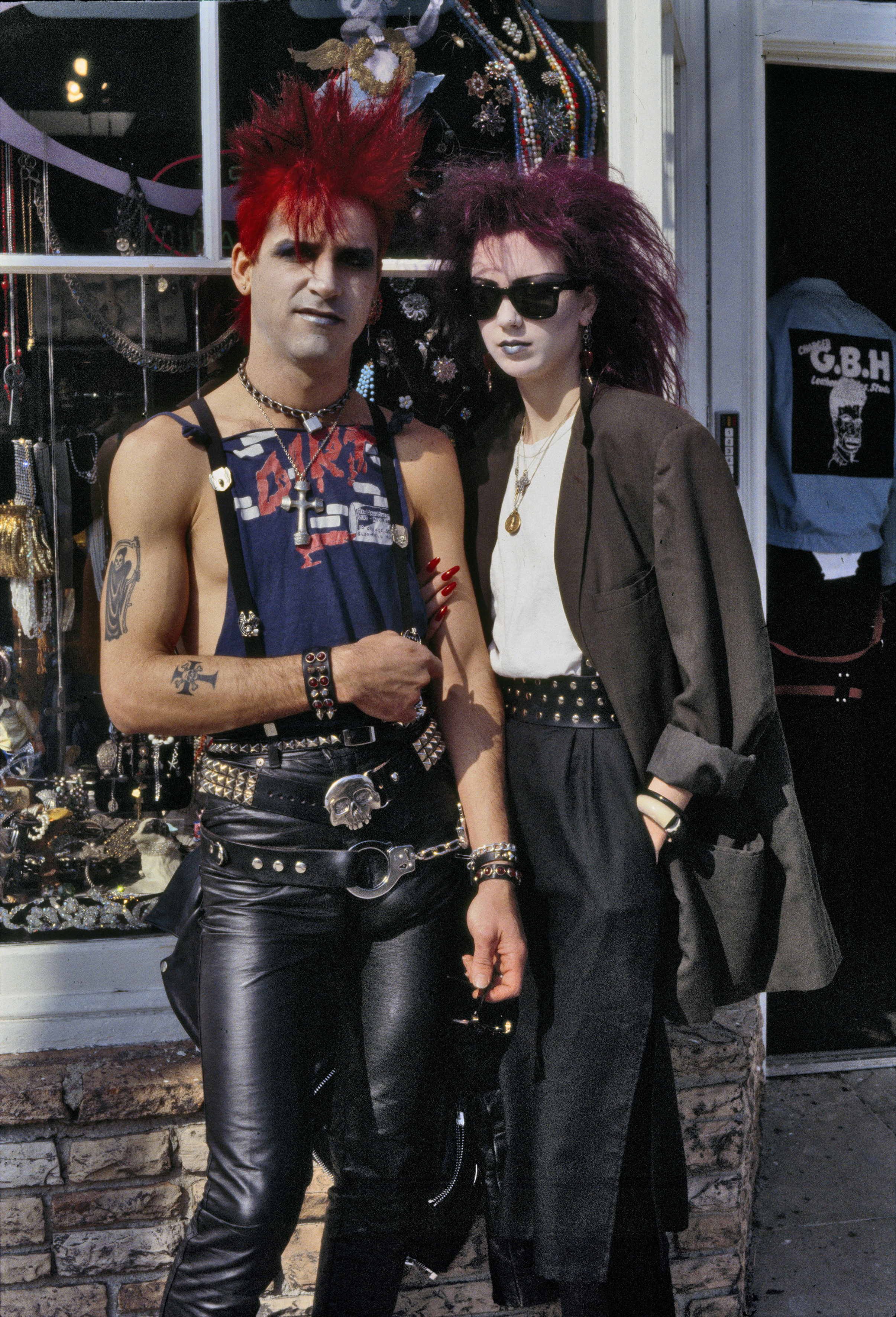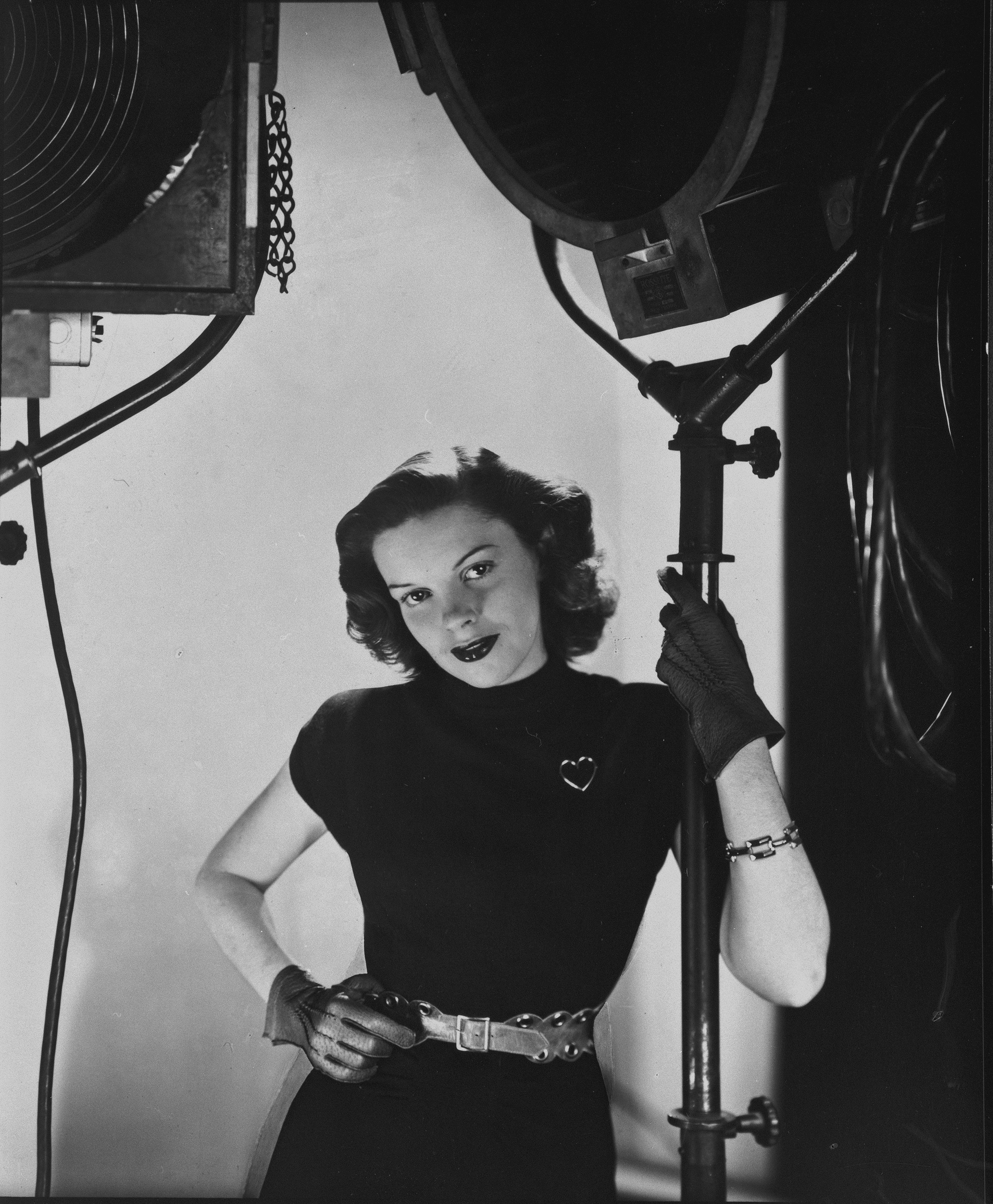Hollywood, a group exhibition at the Helmut Newton Foundation
An essay by Dr. Matthias Harder
Helmut Newton Elizabeth Taylor Vanity Fair Los Angeles 1985 copyright Helmut Newton Foundation
Hollywood is a brand and a myth. For years it has been unsurpassed as an illusion machine, constantly on the lookout for shining stars, not only when the Oscars, or, as they are officially called, the Academy Awards, are presented every spring. That’s when thousands of members of the Academy of Motion Picture Arts and Sciences vote on the best films of the previous year. About a century ago, Ufa in Berlin had a comparable position and power. After the Second World War, Cinecittà in Rome held a similar status, serving as a production site for films and a base for actors and directors. The major European film festivals with their awards in multiple categories – depending on the city, there are the Golden and Silver Bears (Berlin), Palms (Cannes), or Lions (Venice) – create an additional buzz around the medium every year. Beyond Europe and the United States, cinema is flourishing despite the challenges: Hollywood’s equivalent in India, especially Bombay, is Bollywood; in Africa, especially Nigeria, they have Nollywood.
This exhibition traces the allure of Hollywood, which continues to draw many people to Los Angeles in search of work in the film industry. We glimpse both the official and private lives of stars, the villas of the rich and beautiful, film-loving fans, as well as many secondary motifs, such as film props in the studios. As a cineaste, Helmut Newton was also enthusiastic about the Hollywood myth and often cited films in his photography. He referenced the novels of Raymond Chandler and his alter ego, Philip Marlowe, and quoted specific film scenes, such as by Alfred Hitchcock. Even more often, he tactfully adopted a particular film aesthetic, such as that of the French Nouvelle Vague. His fashion photographs since the 1960s can seem almost cinematic in their staging, while his portraits since the 1970s can have the flair of a film still. Whether Josef von Sternberg, Fritz Lang, Federico Fellini, or David Lynch, Newton’s work abounds with both subtle and obvious allusions to the world of film. Newton also photographed the Cannes Film Festival from time to time in the 1980s and ‘90s, capturing actors and fashion on the Croisette with his lens. These photographs are currently on view, parallel to Hollywood, at the exhibition Newton’s Riviera in Monte Carlo.
Michael Dressel, Los(t) Angeles, 2014-2020 copyright Michael Dressel
Helmut and June Newton moved from Paris to Monte Carlo in late 1981–82. From then on, they spent the winter months in Los Angeles at Chateau Marmont Hotel, which was frequented by film industry celebrities. Newton occasionally traveled to the US in the 1970s for various fashion magazines, but it was not until the 1980s and ‘90s that he began systematically taking portraits of actors, directors, and musicians in and around Hollywood, also on assignment for magazines. Newton developed an individual scenario for each of his subjects. He later published some of these portraits in his photography book Us and Them, collaborating closely with his wife, June, on its production. After her career as a stage actor, she enjoyed success as a photographer from 1970 onward, under the pseudonym Alice Springs. In Us and Them, each double-page spread shows two portraits: one taken by Helmut Newton, the other by Alice Springs. The images were shot in and around Los Angeles. We see David Hockney, Robert Evans, Anjelica and John Huston, Tina Chow, Timothy Leary, Hanna Schygulla, and Dennis Hopper – twice each, with completely different facial expressions or gestures. On the one side, they appear natural and approachable; on the other, they appear staged or acted – the private and the public figure, side by side.
Besides commissioned portraits for magazines such as Vanity Fair and TheNew Yorker, Helmut Newton repeatedly photographed for Playboy in Los Angeles, his subjects including the German actor Nastassja Kinski. At Chateau Marmont, he created his famous series of Domestic Nudes and explored his interest in props at various film studios. Nearly 100 photographs that Newton took in and around Hollywood – including iconic images that were rediscovered in the archives of the Helmut Newton Foundation – can now be seen throughout the three front exhibition rooms.
Marianne Faithfull, Los Angeles 1990 copyright Anton Corbijn
In addition to Newton’s photographs, this new group exhibition features 13 photographers and their interpretations of Hollywood, presented as usual in larger groups of works. The main exhibition space is dedicated to the medium of film and the Hollywood system. It features portraits of actors from Hollywood’s early years by Ruth Harriet Louise and George Hoyningen-Huene. There are also film stills and on-set photographs taken later by Steve Schapiro and several Magnum photographers, such as Eve Arnold and Inge Morath, who documented the production of the 1960 John Huston film, Misfits.
Ruth Harriet Louise, Hollywood’s first female photographer, and George Hoyningen-Huene are featured with a selection of vintage prints from the 1920s through the 1950s. This was the era when portrait photography was first used to promote the stardom and glamor of Hollywood faces. We meet Greta Garbo, Joan Crawford, Ginger Rogers, Bette Davis, Charlie Chaplin, and Gary Cooper.
A glass display showcases an extensive portfolio of photographs taken somewhat later by George Hurrell. In 1930, he replaced Ruth Harriet Louise as the foremost portrait photographer for Hollywood’s major film studios, and he later became a close friend of Helmut and June Newton. Steve Schapiro, who has been called “the eye of Hollywood” and recently passed away, was a photographer on over 400 film sets starting in the late 1960s. His images were also used in the design of nearly 100 film posters. Schapiro could make himself invisible on the set, so to speak, while documenting the making of classic films such as Taxi Driver and The Godfather more systematically than anyone else. This exhibition features the photographs he made on the set of Roman Polanski’s film Chinatown, starring Jack Nicholson, Faye Dunaway, and John Huston, which was produced in Los Angeles in 1974. This series also offers a contextual link to Helmut Newton, who photographed the same actors as well as its producer, Robert Evans, several times a few years later. Furthermore, the Chinatown script is based on Raymond Chandler’s crime novels, all of which Newton claimed to have read.
Set somewhat apart in the same exhibition room are five large-format color photographs from Larry Sultan’s The Valley. In this series, he documents the porn film industry near Hollywood – the largest of its kind and, in a sense, the equally lucrative dark side of the dazzling world of glamor. Sultan captures the fringes of porn film production in the San Fernando Valley – where films like Chinatown, E.T., and Mulholland Drive were also shot. Here, we encounter female and male porn stars waiting for their cues. The sex scenes barely feature in Sultan’s series; instead, the photographer focuses his gaze on protagonists who are inactive and clothed. Some of them, like Sharon Wild, enjoy cult status among their fans, comparable to Hollywood actors.
In another part of the exhibition space are five large-format, minimalistic black-and-white portraits shot by Anton Corbijn in Los Angeles. Be it Clint Eastwood or Tom Waits, they do not perform for Corbijn’s camera, and as a result, their portraits contrast with the official film stills and set photographs on display in the main room.
Annie Leibovitz’s famous portrait series is spread out in another display case. Every year, she photographs the Oscar winners for the American edition of Vanity Fair. Her panoramic group portraits become gatefold covers for the March or April issue of the society magazine. As a whole, this room traces a historical arc over an entire century – from the early star portraits of the 1920s, which set a precedent, to present-day Hollywood, and from vintage prints of various sizes to magazine reproductions.
Philip-Lorca diCorcia David Holstein, copyright Philip-Lorca diCorcia. Courtesy the artist, David Zwirner and Sprüth Magers
The city of Los Angeles is the focus of the works in the rear exhibition space. Here, Julius Shulman’s architectural photographs highlight legendary mansions in Hollywood Hills and Beverly Hills – architectural icons of L.A. modernism, including famous Case Study Houses, designed by Richard Neutra, Pierre Koenig, Rudolph Schindler, and other notable architects. Some of these homes belonged to movie stars and producers, and they occasionally served as movie sets – along with their swimming pools, so fashionable in Hollywood, which are now said to number over 40,000 in Los Angeles County alone. Michael Dressel gives us a completely different view of the city with his high-contrast, sometimes unsparing portraits of the failed and disillusioned, and also of Hollywood tourists. Populating these fleeting encounters on the street are people many of us would prefer to ignore in daily life, who are homeless, aggressive, or confused. Some of those individuals also become accomplices to Dressel’s productions in Hollywood. Everything becomes a stage here; you just have to look closely and react quickly enough.
Jens Liebchen started work on his color series L.A. Crossing in 2010 as part of the La Brea Matrix project initiated by Markus Schaden, aiming to trace the footsteps of Steven Shore. Liebchen hit the roads of Los Angeles with a rental car. At first glance, the photographs he shot through its window might appear to be unspectacular street scenes. Viewed as a series, however, the images unfold into a compassionate sociological study. Hanging on the opposite wall is Philip-Lorca diCorcia’s Hustler series from the 1990s, portraying male prostitutes around Santa Monica Boulevard. Each photograph’s title includes the sitter’s name, place of origin, and hourly rate – the latter referring to the fee received for their participation in the photograph. In Hollywood, everything seems for sale.
Flipped open in the display case in the middle of the room is Ed Ruscha’s legendary accordion-fold leporello, Every Building at the Sunset Strip. Produced in 1966, the series provides an architectural and social context for the other photographers’ later images of the same sites and street corners, which grace the walls of the exhibition space.
In June’s Room, a different kind of street photography is on view, with images Alice Springs shot on Melrose Avenue in West Hollywood in 1984. The photographs capture the music-based counterculture of punks and mods and other style-conscious individualists who transformed the streets into a stage – as if life were one big casting show. The entrance room to June’s Room features photographs from the private collection of Helmut and June Newton that relate to or were taken in Hollywood.
Helmut Newton returned to Los Angeles regularly. He died on Sunset Boulevard on January 23, 2004. He had suffered a heart attack while driving his car out of the Chateau Marmont garage. Since his death, much has changed in L.A., and some of the legendary major film studios are now history. Metro-Goldwyn-Mayer (MGM), for example, was sold to Sony and then sold again recently. Other studios like Paramount can barely get out of the red despite the occasional box office hit, and they are increasingly cooperating with movie-streaming services. As we know, film as both an institution and business has changed radically in recent years, even more so by the COVID-19 pandemic. This exhibition in Berlin looks back on 100 years of its history through these works, taking an utterly contemporary perspective. Paying homage to the slowly fading splendor of an entire era, it carries on the tradition of cinematographic storytelling through photographic means.
3 June - 20 November 2022 at the Helmut Newton Foundation, Jebensstraße 2, Berlin
Alice Springs, Melrose Avenue, Los Angeles, 1984_copyright Helmut Newton Foundation
George Hoyningen-Huene Judy Garland Hollywood 1945, © The George Hoyningen-Huene Estate Archives

